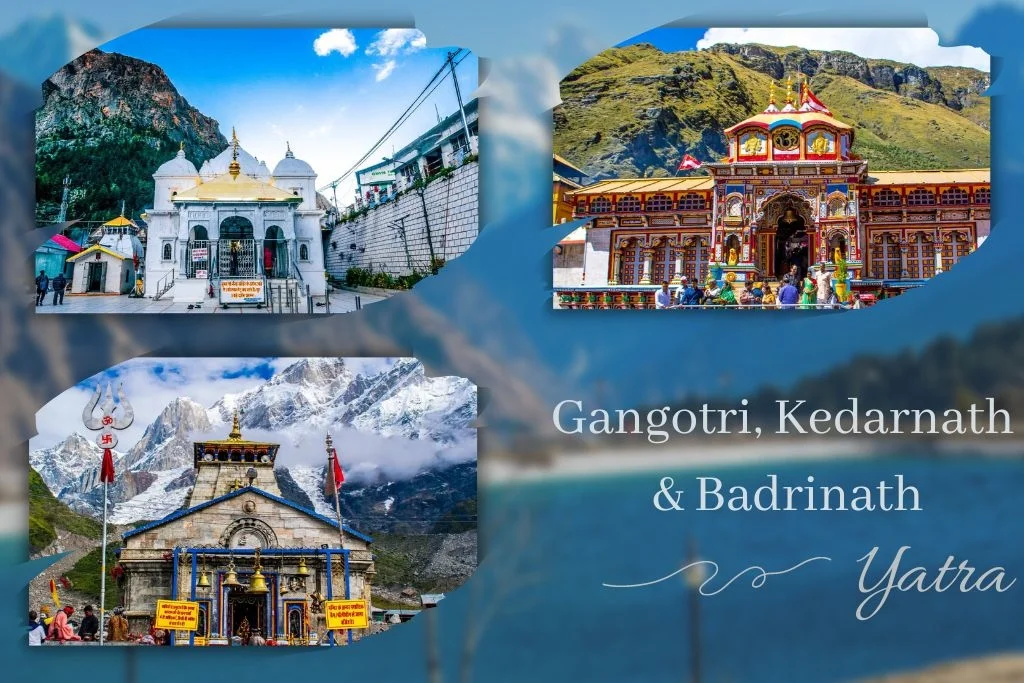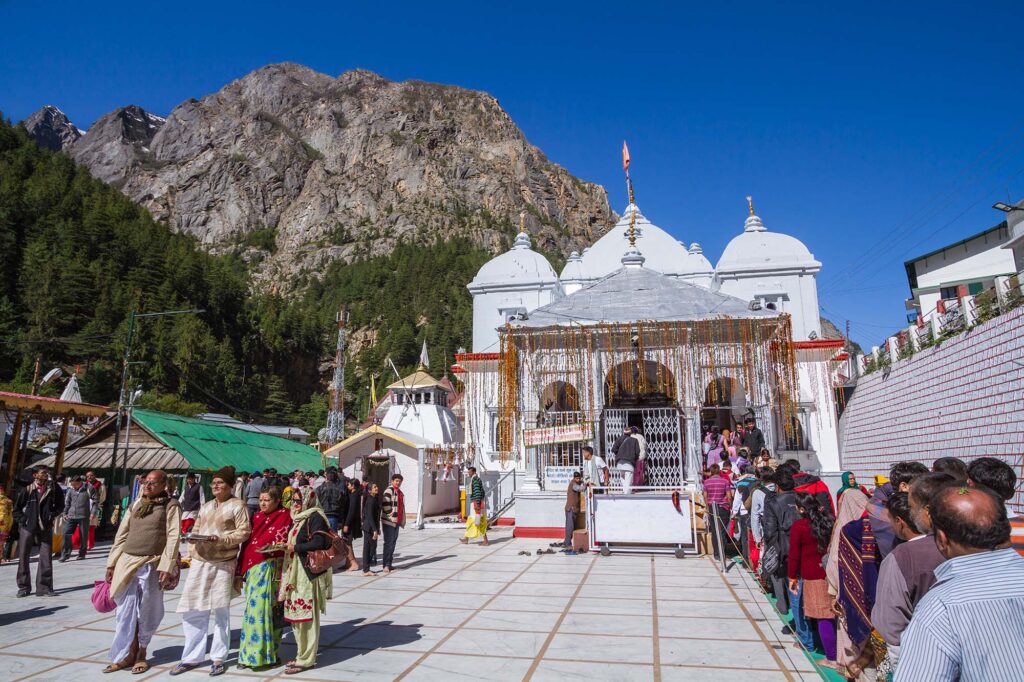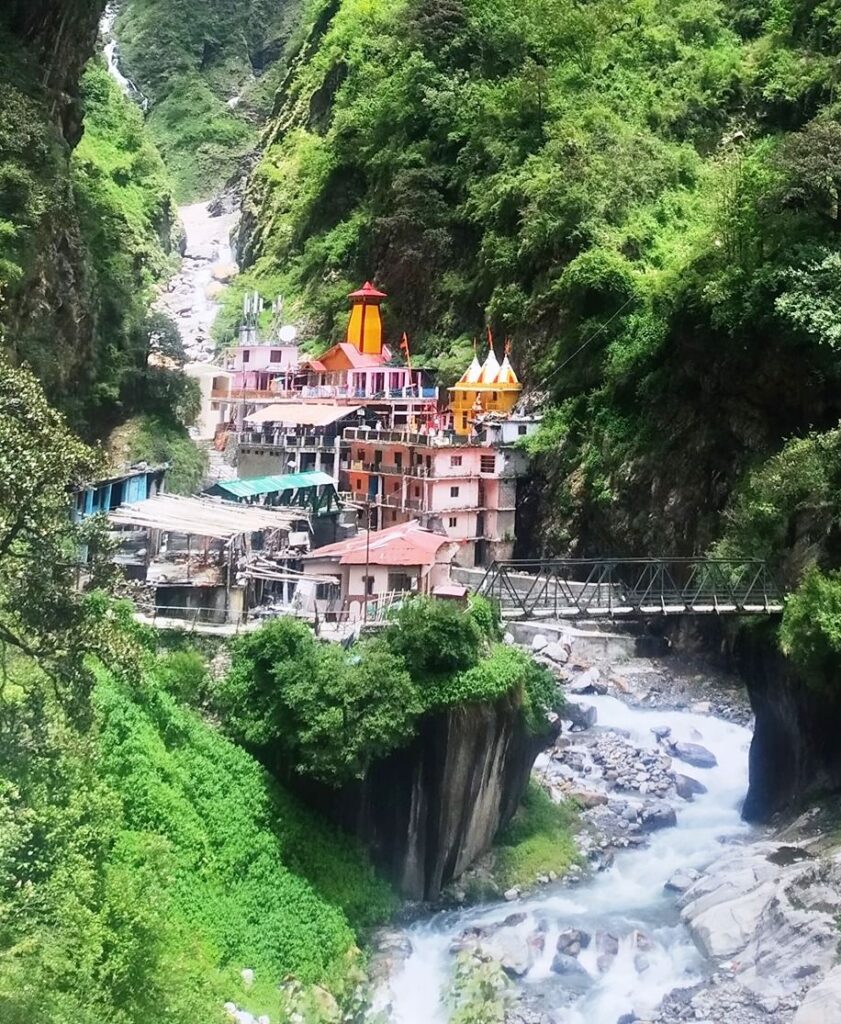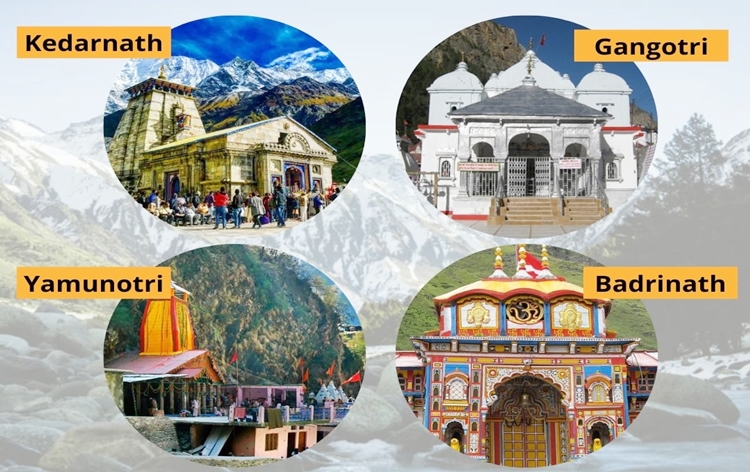
Char Dham Yatra: Top 10 Must-Know Facts Before You Go
The Char Dham Yatra is one of the most revered and significant pilgrimage journeys in India. It encompasses visiting the four sacred temples located in the majestic Himalayas. These four sites—Badrinath, Kedarnath, Gangotri, and Yamunotri—are considered to be the spiritual heart of Hinduism. Every year, millions of devotees from all over the world embark on the Char Dham Yatra, seeking blessings, spiritual awakening, and salvation.
If you’re planning your journey, it’s crucial to be well-prepared. In this comprehensive guide, we’ll cover the Top 10 Must-Know Facts Before You Go on Char Dham Yatra to ensure that your pilgrimage is smooth, safe, and fulfilling.
1. Significance of the Char Dham Yatra
The Char Dham Yatra holds immense spiritual significance for Hindus. It is believed that visiting these four holy shrines cleanses your soul, helping you attain moksha (liberation from the cycle of birth and death). The term “Char Dham” translates to “four abodes of God,” and each of these temples is dedicated to a specific deity.
- Badrinath: Badrinath, one of the four sacred temples in the Char Dham Yatra, is a revered pilgrimage site dedicated to Lord Vishnu. Located in the Chamoli district of Uttarakhand, Badrinath sits at an altitude of 3,300 meters, nestled between the Nar and Narayan mountain ranges. The temple is believed to be established by Adi Shankaracharya in the 8th century and has become a significant spiritual destination.
- Pilgrims visit Badrinath to offer prayers and seek blessings for salvation. The Alaknanda River flows nearby, and devotees often take a holy dip in the Tapt Kund, a natural hot spring, before entering the temple. The best time to visit Badrinath is between May and October, when the temple remains open to visitors.
- Badrinath is not only a spiritual center but also a place of immense natural beauty, offering a serene and mystical atmosphere to all who visit.

- Kedarnath: Kedarnath, one of the most revered pilgrimage sites in India, is dedicated to Lord Shiva. Nestled in the Garhwal Himalayas of Uttarakhand, it sits at an altitude of 3,583 meters, making it the highest among the 12 Jyotirlingas. Kedarnath is a key destination in the Char Dham Yatra and is especially significant to followers of Lord Shiva.
- The Kedarnath Temple, believed to have been built by the Pandavas and later revived by Adi Shankaracharya, is surrounded by snow-clad peaks, including the majestic Kedar Dome. Pilgrims trek 16 km from Gaurikund to reach the temple, which is open from late April to early November due to harsh winter conditions.
- The temple houses a conical Shiva Lingam, representing Lord Shiva in his form as the “Lord of Kedar.” Pilgrims visit to seek divine blessings and spiritual purification in this serene, sacred space.

- Gangotri: Gangotri, one of the four sacred shrines of the Char Dham Yatra, is dedicated to Goddess Ganga, the personification of the holy Ganges River. Located at an altitude of 3,100 meters in the Uttarkashi district of Uttarakhand, Gangotri holds immense spiritual significance, as it is believed to be the origin of the Ganges. The river, known as Bhagirathi in its early stages, is said to have descended to Earth after intense penance by King Bhagirath to cleanse the souls of his ancestors.
- The Gangotri Temple, built in the early 19th century by Amar Singh Thapa, is surrounded by stunning mountain scenery and is a major pilgrimage site. Devotees visit to offer prayers and take a dip in the freezing waters of the river, which is believed to wash away sins. The temple is open from April to October, after which it closes due to heavy snowfall.

- Yamunotri:Yamunotri, the source of the sacred Yamuna River, is a key pilgrimage destination in the Char Dham Yatra, located in the Garhwal Himalayas of Uttarakhand at an altitude of 3,293 meters. Dedicated to Goddess Yamuna, the temple is believed to protect devotees from untimely death and help in spiritual cleansing. The Yamunotri temple was built by Maharaja Pratap Shah of Tehri Garhwal.
- Pilgrims trek about 6 km from Janki Chatti to reach the temple, passing through beautiful landscapes of forests, waterfalls, and rugged terrain. A highlight of the visit is a dip in the Surya Kund, a hot water spring near the temple, where devotees also cook rice as a religious offering.
- The journey to Yamunotri is not just a spiritual quest but also an adventure, surrounded by the serene beauty of the Himalayas, and offers pilgrims an experience of deep devotion and natural wonder.

Undertaking the Char Dham Yatra is seen as a lifetime achievement, and completing it is said to bring immense spiritual merit.
2. The Best Time to Undertake the Char Dham Yatra
The best time to undertake the Char Dham Yatra is primarily during the summer months, from late April to early June, and then again in September to October. This period offers the most favorable weather conditions for pilgrims, ensuring a comfortable and enjoyable journey through the scenic landscapes of the Himalayas.
As winter fades and spring blossoms, the temples at Badrinath, Kedarnath, Gangotri, and Yamunotri are reopened to devotees, typically around late April or early May. During this time, the weather is generally mild, with daytime temperatures ranging from 15°C to 20°C, making it suitable for trekking and outdoor activities. The surrounding flora comes to life, enhancing the natural beauty of the region, which adds to the spiritual experience of the pilgrimage.
However, the peak of the yatra occurs in May and June, coinciding with several festivals and holidays, drawing a significant number of devotees. While this time is vibrant and bustling, it is essential to be prepared for crowds and make travel arrangements in advance.
The monsoon season, from July to September, brings heavy rainfall, leading to landslides and treacherous conditions in the mountainous terrain, which is why it is advisable to avoid this period. The yatra resumes in late September when the weather becomes more stable. The post-monsoon months offer clear skies and stunning views of the Himalayan peaks, providing a serene atmosphere for spiritual reflection and connection with nature.
Overall, planning your Char Dham Yatra during the recommended months not only ensures safety and comfort but also enhances the overall experience, allowing for a more profound and fulfilling pilgrimage.

3. Registration and Permits for the Char Dham Yatra
Before embarking on the Char Dham Yatra, it is crucial to complete the registration process, which is mandated by the Uttarakhand government to ensure the safety and security of all pilgrims. The registration aims to keep track of visitors and provide assistance in emergencies. Pilgrims can register online through the official website or at designated registration centers located in key areas such as Haridwar, Rishikesh, and the entry points to the yatra.
During the registration, individuals are required to provide basic personal information, including identification details, and undergo biometric verification. It is essential to carry a valid photo ID, such as an Aadhar card or passport, along with the biometric registration slip throughout the journey.
This registration process not only helps authorities manage the influx of devotees during the peak yatra season but also enhances overall safety measures, especially in high-altitude areas prone to natural calamities. Completing this step well in advance of your pilgrimage ensures a smoother experience, allowing you to focus on the spiritual aspects of your Char Dham Yatra without any administrative worries.
4. Physical Fitness and Health Preparation
Undertaking the Char Dham Yatra demands a reasonable level of physical fitness due to the challenging terrain and high altitudes involved in the journey. The trek to places like Kedarnath and Yamunotri can be strenuous, often requiring long hours of walking on uneven paths. Therefore, it is essential for pilgrims to prepare their bodies in advance to enhance endurance and minimize the risk of altitude sickness.
A good fitness regimen should include cardiovascular exercises such as walking, jogging, and cycling to build stamina. Strength training, particularly for the legs and core, can be beneficial for managing steep inclines. Additionally, incorporating stretching and flexibility exercises will help prevent injuries during the trek.
It is advisable to gradually acclimatize to higher altitudes by spending time at lower elevations before embarking on the yatra. Staying hydrated and maintaining a balanced diet rich in carbohydrates and proteins is crucial for sustaining energy levels. Consulting a healthcare professional for a medical check-up prior to the trip can also provide insights into personal health concerns. Preparing physically not only ensures a more enjoyable experience but also allows pilgrims to fully embrace the spiritual significance of the Char Dham Yatra.
Key tips for preparing physically for the Char Dham Yatra:
- Engage in light cardiovascular exercises like walking or jogging.
- Practice deep breathing and meditation for acclimatization to high altitudes.
- Stay hydrated and maintain a healthy diet.

Being physically prepared will help you fully enjoy the spiritual experience of the Char Dham Yatra.
5. Route and Transportation for Char Dham Yatra
The Char Dham Yatra follows a well-established route that begins from the foothills of the Himalayas, typically starting in Haridwar, Rishikesh, or Dehradun. From these points, pilgrims travel to the four sacred shrines: Yamunotri, Gangotri, Kedarnath, and Badrinath. The journey can be completed in various ways, depending on individual preferences and physical fitness levels.
Travelers can opt for road transportation, as well-maintained buses and taxis are readily available to facilitate travel between the shrines. The route to Yamunotri involves a scenic drive to Janki Chatti, followed by a 6 km trek to the temple. Next, devotees head to Gangotri, which is about 100 km from Yamunotri. Afterward, the journey continues to Kedarnath, where pilgrims must trek approximately 16 km from Gaurikund. Finally, the trip concludes at Badrinath, which is accessible by road.
For those seeking a quicker alternative, helicopter services are available for specific routes, significantly reducing travel time and effort. Regardless of the chosen mode of transport, planning and booking in advance is essential, especially during the peak yatra season, to ensure a smooth and fulfilling pilgrimage experience.
6. Accommodation and Food Options
During the Char Dham Yatra, accommodation and food options are essential considerations for a comfortable pilgrimage experience. Each of the four sacred shrines—Yamunotri, Gangotri, Kedarnath, and Badrinath—offers a range of lodging facilities catering to various budgets and preferences. Pilgrims can find options ranging from budget-friendly guesthouses and dharamshalas to more comfortable hotels and lodges. The Uttarakhand Tourism Board also provides facilities that ensure cleanliness and safety, allowing travelers to rest and rejuvenate after long treks.
As for food, the culinary offerings along the yatra route primarily consist of vegetarian meals, adhering to the spiritual ethos of the pilgrimage. Local eateries and dhabas serve simple yet nutritious meals, including rice, lentils, chapatis, and seasonal vegetables. Some areas may offer local delicacies, providing a taste of the region’s culture. It is advisable for pilgrims to carry dry snacks and bottled water, especially during treks, where food options may be limited.
Travelers should also plan their meals and be mindful of hygiene to avoid any health issues. With proper arrangements, pilgrims can enjoy both the spiritual journey and the delicious offerings along the way, enriching their overall experience during the Char Dham Yatra.

7. Essentials to Pack for the Char Dham Yatra
Packing wisely for the Char Dham Yatra is crucial to ensure a comfortable and enjoyable pilgrimage experience. Essential items include warm clothing, as temperatures can drop significantly, even during summer months. Layered outfits, including thermal innerwear, fleece jackets, and waterproof outer layers, will help maintain body warmth in varying conditions.
Comfortable trekking shoes are a must, providing the necessary support for long walks over rugged terrain. Additionally, a sturdy backpack for carrying personal items is essential. It’s advisable to include a reusable water bottle to stay hydrated and minimize plastic waste, along with dry snacks like nuts, energy bars, and fruits for quick energy during treks.
Health essentials should also be part of your packing list, including a basic first aid kit with medications for altitude sickness, headaches, and common ailments. Sunscreen, sunglasses, and a hat will protect against the sun’s rays at higher altitudes. Finally, don’t forget important documents, such as your registration slip and ID proof, to ensure a hassle-free journey. By preparing thoughtfully and packing these essentials, you can focus on the spiritual significance of the Char Dham Yatra while enjoying the stunning Himalayan landscapes.Char Dham Yatra is comfortable and hassle-free.
8. Altitude Sickness and Health Precautions
Altitude sickness, or acute mountain sickness (AMS), is a common concern for pilgrims undertaking the Char Dham Yatra due to the high altitudes involved, particularly at sites like Kedarnath and Badrinath. Symptoms can include headaches, nausea, dizziness, and fatigue, and can occur when ascending too quickly without proper acclimatization.
To mitigate the risk of altitude sickness, it’s essential to ascend gradually. Spending a day at lower altitudes before reaching the higher shrines allows your body to acclimatize. Staying well-hydrated is crucial; drinking plenty of water helps maintain fluid balance and supports overall health. Avoiding alcohol and heavy meals can also reduce the risk of AMS.
Carrying medications such as acetazolamide (Diamox) can be beneficial, as they help prevent altitude sickness. Additionally, having a basic first aid kit with essential medications for headaches, nausea, and any pre-existing conditions is advisable.
Listening to your body is paramount; if symptoms of altitude sickness occur, it’s essential to descend to a lower altitude immediately. By taking these precautions and being mindful of your health, you can enhance your experience during the Char Dham Yatra while minimizing the risks associated with high altitudes.
- Take short breaks while trekking.
- Stay hydrated by drinking plenty of water.
- Avoid heavy meals and alcohol.
- Carry medication like Diamox if you’re prone to altitude sickness.

9. Spiritual Practices and Rituals at the Temples
The Char Dham Yatra is not just a physical journey but also a deeply spiritual one. Each temple has its own unique rituals and practices. Pilgrims are encouraged to participate in aarti (prayer ceremonies), perform holy dips in rivers like the Ganga and Yamuna, and offer prayers to the presiding deities.
At Gangotri, pilgrims take a holy dip in the Ganges, while at Yamunotri, they take a dip in the Yamuna River. The experience of offering prayers at these ancient temples and witnessing the majestic aartis is a highlight of the Char Dham Yatra.
10. Environmental Responsibility During Char Dham Yatra
As you embark on your Char Dham Yatra, it’s important to be environmentally conscious. The fragile ecosystem of the Himalayas is vulnerable to pollution, especially with the increasing number of pilgrims each year. Follow these eco-friendly practices:
- Avoid plastic: Carry reusable water bottles and bags.
- Dispose of waste properly: Use designated bins and avoid littering.
- Respect nature: Do not disturb the local flora and fauna.
By being mindful of your environmental impact, you help preserve the beauty and sanctity of the Char Dham Yatra for future generations.

Conclusion
The Char Dham Yatra is more than just a journey; it’s a spiritual and emotional experience that brings you closer to the divine. Knowing these Top 10 Must-Know Facts Before You Go on Char Dham Yatra will not only help you plan better but will also enrich your overall pilgrimage experience. From understanding the spiritual significance to preparing for the physical challenges, every aspect of the Char Dham Yatra plays a crucial role in making it a transformative journey.
Whether you’re a first-time pilgrim or a seasoned traveler, embarking on the Char Dham Yatra is a once-in-a-lifetime opportunity to seek blessings, immerse yourself in the rich spiritual heritage of India, and rejuvenate your soul.
Remember, preparation is key, and now that you’re equipped with the essential knowledge, you’re ready to begin your Char Dham Yatra with confidence and devotion.








Leave a Reply